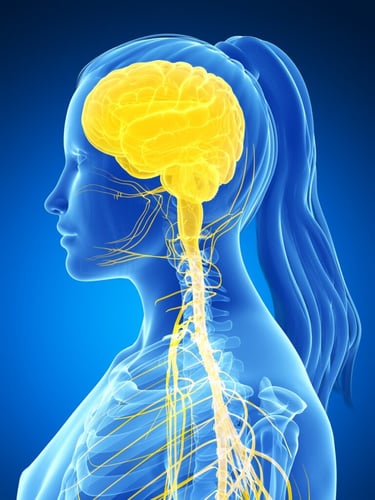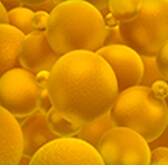Ascendia Uses Experience, Advanced Proprietary Nano-technology to Develop CNS Formulation for Liquid-filled Capsule Delivery
An emerging pharmaceutical company sought a new formulation for its central nervous system (CNS) drug so it could be administrated orally. It turned to Ascendia Pharma as its contract development and manufacturing organization (CDMO) partner, and our experienced team of scientists used innovative technology to reduce the dose and to improve solubility to meet the goal within the designated timeframe. The formulation developed by Ascendia increases the active pharmaceutical ingredient (API) concentration, which reduces the pill burden.
The project not only met the customer needs but addressed a growing issue within drug development. CNS disorders and other brain diseases are some of the most prevalent, devastating, and difficult to treat. Global drug development for brain diseases can be expected to grow rapidly in the next two decades, as there is an increase in seniors and patients with CNS disorders.

Currently, drug development for brain diseases has the poorest success rates in relation to other therapeutic areas. Additionally, the time to develop CNS drugs is normally much longer than for non-CNS drugs. Clinical trials of CNS drugs are challenging because of the complexity of the brain, side effects, and lack of efficient technologies to deliver drugs across the blood-brain barrier (BBB). Only a slight percentage of small molecules can cross the BBB, adding another element to effective formulation development for CNS applications.
Challenging CNS Project
The CNS project brought by the pharma company to the Ascendia team exhibited all these challenges. It also had the atypical stringent timeline. One project hurdle that had to be scaled was to increase the API efficacy across the BBB. Another was the fact that many APIs don’t allow for liquid capsule use.
The existing drug delivery method was injectable for the drug; a liquid-filled capsule that increased API delivery and bioavailability to enable oral route of administration was the project objective. Previous efforts to develop a formulation to achieve the goal had limited success. In short, the prior technologies didn’t meet the product profile goals.
Increased dose or bioavailability was an absolute. Otherwise, oral delivery was not feasible, as the alternative was multiple large-size capsules per treatment. This scenario is problematic from a business standpoint, as well as practical patient care. The only pathway to increased dose was to improve the solubility and bioavailability.
Nano-technology Improves Solubility
The Ascendia team collaborated with the pharmaceutical company at the onset of the project. Based on those discussions, and the team’s experience in potent compounds and developing liquid-filled capsules, a formulation development strategy was established.
It was determined that one of Ascendia’s proprietary nano-technologies – Emulsol – would be used for the project. EmulSol was selected because it is specifically for production of oil-in-water nano-emulsions. Lipid, solvents and co-solvents/surfactants using Emulsol have a proven track record of improving oral delivery of lipophilic drug candidates in prototype formulations in in-vitro and in-vivo animal models.

After a suitable oil phase was determined based on chemical compatibility and solubility with the drug substance, a mixture of the oil, water, and drug substance was processed. A fine nano-emulsion of the oil droplets in a water phase in situ was established.
Formulating a Better Concentration
Another element critical to the success of the process was utilizing EmulSol technology, which is proven to increase solubility and bioavailability of poorly soluble drugs. EmolSol technology was used to screen the prototype formulation at the discovery state, which helped lead to a better concentration.
Single Location Advantages
The entire project was conducted in the Ascendia facility in North Brunswick, New Jersey, which is home to Class 100,00 (ISO 8), Class 10,000 (ISO 7) and Class 100 (ISO 5) cleanrooms. Using only a single location throughout allowed the team to be together on-site and better share experiences. The result was a more efficient process to develop a logical product progression.
It proved to be a key to the success for this formulation development, as it is with so many other Ascendia projects. Conducting all the work in one location also allowed Ascendia’s BEST (Brilliant technology, Excellent service, Superior quality, Trust) philosophy to be implemented, helping make what had been previously impossible, possible.
Advancing to Phase 2
We met the deadline of completing the project by year-end. The pharma company is now moving the project forward into Phase 2 development and is undergoing a composition-matter patent application out of those studies.
Ascendia will further support the company in this later stage development with our expanded GMP capability. Ascendia owns small-scale and production-scale capsule filling and banding machines. They enable us to support the project transition from Good Laboratory Practices (GLP) testing, Investigational New Drug (IND) submission, method validation, and GMP manufacturing for human Phase 1 and Phase 2 study.
Contact us to learn more about Ascendia Pharma’s approach to formulation development and see how we can add value to your product portfolio and pipeline.
